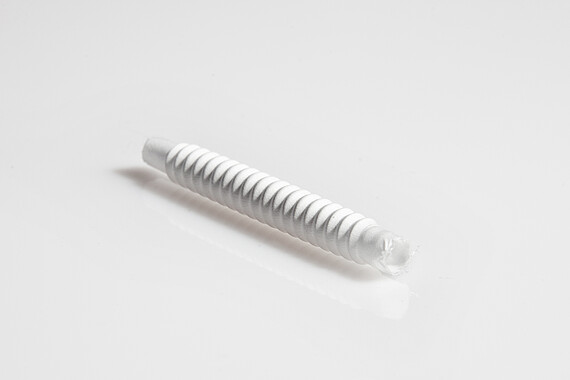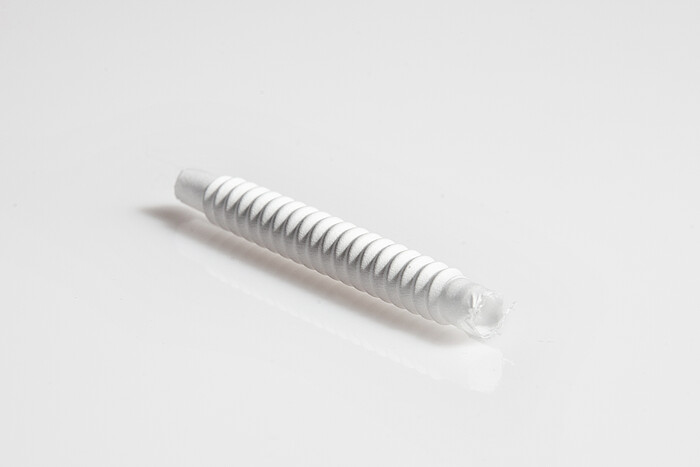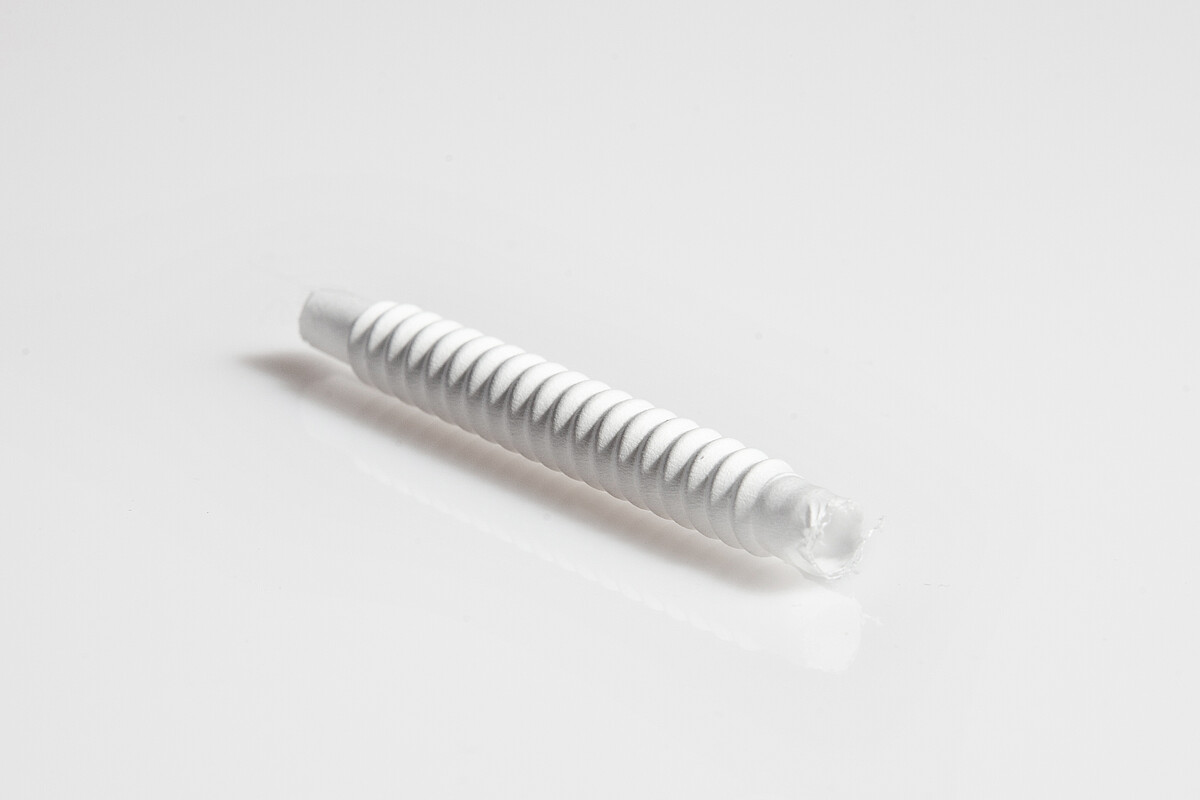


The Biomaterials group focuses on polymer processing for implant technology, developing medically relevant implants, and creating test procedures for their validation.
Polymer processing
-
Electrospinning
At the Institute of Multiphase Processes, the most widely pursued approach for functional tissue engineering is (melt) electrospinning. This process can produce nano- to micrometre-sized fibres that can be processed into a fleece-like material. The ultimate objective is to create natural tissue in the form of a scaffold for use as an implant material. This has potential applications in fields such as vascular prostheses, tendon replacement constructs, nerve guide rails, and heart valve prostheses.
-
Electrospraying/Air-Flow
Another application is electrospraying. Unlike the more common electrospinning, this process involves atomising a suitable polymer solution. The resulting spray contains fine, highly unipolar charged droplets with a narrow size distribution. This method can also be used to embed cells in the resulting beads. Alginate is commonly used as a degradable biopolymer for the outer shell, allowing for the cells to be released with a time delay. The alginate droplets are transported out of the cannula using compressed air in the air-flow process.
Implant development
-
Nerve guide rails
Traumatic injuries and loss of substance in peripheral nerves can result in lifelong physical limitations. The gold standard for reconstructing longer nerve defects is autologous nerve transplants, but their availability is limited due to the complete loss of function of the donor nerve. Biosynthetic nerve splints with innovative stimulating material properties can provide alternatives to the tubular implants available on the market, which have highly variable regeneration success rates. The nerve guide developed with piezoelectric properties aims to expedite directed axonal growth through microelectric impulses, thereby significantly reducing long regeneration times.
-
Tendon replacement
As part of the FOR 2180 research project, our interdisciplinary team is developing a graded implant for future use at the tendon-bone junction of the rotator cuff. These modifications aim to improve the feasibility and model production of the implant. The implant is made of electrospun fibre mats composed of biodegradable polymers, such as polycaprolactone. The fibre mats have a directional ('tendon-side') or non-directional ('bone-side') fibre orientation. Suitable measures, such as introducing 'sacrificial fibres' that are soluble in the physiological environment, are used to adjust the fibre mats with regards to the spaces between the fibres and permeability. This promotes the survival and function of migrating cells and enables the transport of nutrients and metabolic products. Additionally, the mechanical properties are adapted to the in vivo situation.
-
Drug Delivery
After a stroke or myocardial infarction, thrombosis is a frequent and life-threatening complication. To reduce this risk, biomimetic materials are being developed to deliver anticoagulants locally. Electrospinning is a technique used to produce drug delivery systems for this purpose. Embedding anticoagulants in fibre constructs can significantly reduce the risk of thrombosis. Moreover, researching the production and characterisation of a dual delivery system composed of biopolymers that contains two or more pharmaceuticals is a promising approach for treating thrombosis.
-
Surface modification of cochlear implants
Fibrosis in the area of cochlear implant electrodes can cause increased impedance, unpredictable stimulus propagation, and higher energy requirements for the implants. To address this issue, the Institute of Multiphase Processes applies microstructures to the surfaces of stimulation electrodes using the electrospinning process. These microstructures consist of thin silicone elastomer fibres. The silicone fibre fleece is hydrophobic, which reduces fibroblast adhesion without affecting the implant's electrical properties. Additionally, the fibre fleece can serve as a reservoir for releasing anti-inflammatory substances and neurotrophic growth factors, promoting the regeneration of nerve cells in the inner ear.
Testing and characterisation
-
Mechanical testing
Developing a vascular prosthesis requires meeting strict requirements, including biological compatibility of the scaffold structure and high mechanical standards. To test these requirements, a tensile test rig has been developed that allows for testing under physiological temperature conditions. The system is designed to test different geometries and tensile directions in both radial and axial directions.
-
Flow measurement
Additionally, a bending test rig was developed to assess the flow behaviour of vascular prostheses based on the bending angle. The test system includes a circulation system that adjusts the pressure and flow by manipulating the height differences. Pressure and temperature sensors, along with a thermostat, are used to record characteristic values and maintain consistent test conditions.
-
Quality control/ repeatability
Two methods are used to ensure and determine the quality and repeatability of the samples. Firstly, a mechanical characterisation can be carried out by recording the change in length and force up to fracture in a uniaxial tensile test. Secondly, porosity characterisation is used to determine the consistency of the cavity volume.
Contact
30823 Garbsen


